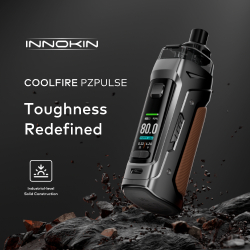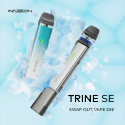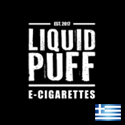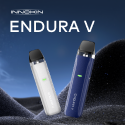Category: Vaping News
Vaping News by Bill Tarling
VIDEO SHOWS WHY USING THE PROPER CHARGER IS CRITICAL FOR VAPING SAFETY
“Just like smartphones and electric cars, e-cigarettes contain lithium-ion batteries that can burst into flames or explode if pierced, damaged or overheated. In the video, the small silver vape is being overcharged at a higher voltage than it should be using an incorrect USB connector. The battery inside the vape can’t handle the higher voltage so enters a state of ‘thermal runaway’ and explodes wildly inside a protective Perspex container. The UK government also stresses the importance of using the right vape charger. It says on its website: ‘Only use the charger that was supplied with the vape for charging. Don’t charge your vape overnight and regularly check your device when it is charging. Unplug your vape when it is fully charged.'”
ARTICLE LINK: video shows the lithium battery from an e-cigarette exploding during charging test
STUDY SHOWS FLAVOR BAN FAILED TO REDUCE YOUTH VAPING
“Restrictions on the sale of flavored tobacco products were not associated with a decrease in current or ever e-cigarette use among high school students in the California Bay Area one-year after their implementation, according to a new study. The researchers concluded that flavored vape bans “did not significantly change” the odds of current and ever e-cigarette use among students. Vapor industry advocates contend that flavor bans have negative consequences for public health because flavors are essential for adults trying to quit smoking. State finances are impacted by flavor bans as well. For example, Massachusetts’ ban on flavored vaping and tobacco products is costing the state an estimated $10 million in revenues each month, according to Americans for Tax Reform.”
ARTICLE LINK: Study: Flavor Bans Failed to Reduce Youth Vaping
DENTISTRY PUBLISHES TRUTHS ABOUT VAPING
CONCLUSION:
PERIODONTAL HEALTH:
ORAL CANCER:
PENN STATE STUDY SHOWS NIC VAPE PRODUCTS HELP REDUCE SMOKING DEPENDENCY
“A Penn State College of Medicine study suggests that these devices may help people decrease their dependence on combustible cigarettes — which contain an array of harmful chemicals called toxicants — without increasing their overall nicotine dependence.
The researchers enrolled 520 participants interested in reducing their cigarette intake but with no plans or interest to quit smoking and instructed them to reduce their cigarette consumption over the six-month study period. Participants randomly received an e-cigarette that delivered 36, 8 or 0 mg/mL of nicotine, or a cigarette substitute that contained no tobacco, as an aid in their efforts to reduce their cigarette consumption. Participants self-reported their cigarette and e-cigarette dependence at one, three and six months using validated measures of dependence.
At six months, all participants in the e-cigarette groups reported significant, decreased cigarette consumption, with those in the 36 mg/mL group smoking the least number of cigarettes per day. Those in the e-cigarette groups reported significantly lower dependence on the Penn State Cigarette Dependence Index than those in the cigarette substitute group.
“Our results suggest that using e-cigarettes or a cigarette substitute to reduce cigarette consumption can result in a reduction of self-reported cigarette use and dependence,” said Yingst, who directs the College of Medicine’s Doctor of Public Health Program.
“Importantly, use of the high concentration e-cigarette did not increase overall nicotine dependence, and was associated with a greater reduction in cigarette smoking compared to the cigarette substitute.””
ARTICLE LINK: E-cigarette use to reduce cigarette smoking may not increase nicotine dependence
STUDY DEBUNKS YOUTH VAPING EPIDEMIC CLAIMS
“A comprehensive review of youth vaping in the US has concluded that the harm from vaping is greatly exaggerated and that vaping is unlikely to be causing an increase in youth smoking. The review by leading researcher Professor Riccardo Polosa and colleagues was published today in The Journal of Allergy and Clinical Immunology.
Vaping rates rose substantially over the last decade but fell by 60% from 2019 to 2021 and vaping may be a passing fad, like fidget spinners. Most vaping is by young people who have previously smoked. At the same time that vaping has risen in popularity, high school cigarette smoking has declined dramatically and has almost been eliminated in the US. Smoking rates fell 77% from 8.3% in 2018 to 1.9% in 2021. This suggests that vaping is highly unlikely to be increasing smoking uptake.
It is much more likely that vaping is diverting young people away from smoking, helping some young smokers to quit and contributing to the rapid fall in youth smoking.
JUUL GRANTED TEMPORARY STAY OF EXECUTION ON U.S. MARKET
A federal appeals court issued a temporary stay Friday blocking a nationwide ban on Juul Labs’ electronic cigarette products, just a day after the Food and Drug Administration ordered Juul merchandise to be pulled off store shelves due to marketing concerns. Juul argued in a court filing Friday that the FDA ban was unlawful, calling it an “arbitrary” ruling that has nothing to do with safety. The D.C. Circuit Court of Appeals judges who issued the stay Friday did not rule on the merits of Juul’s argument, but determined the company could continue selling its products while the case proceeded in court.
ARTICLE LINK: Appeals Court Halts Ban On Juul Vaping Products For Now
FDA – JUUL Banned From U.S. Market
“The Food and Drug Administration is expected to announce that Juul electronic cigarette products can no longer be sold in the United States as soon as Wednesday. The FDA’s campaign to police Juul e-cigarette products has been years in the making. The agency targeted the company for its role in perpetuating a new wave of teenage nicotine use, driven by appealing flavors. Juul conceded to the FDA in 2019 when it pulled all fruit and dessert flavors from the market, though it was permitted to keep marketing menthol- and tobacco-flavored nicotine pods used in the vaping device.
The FDA’s move to pull Juul from the market clears the way for its biggest competitor, Reynolds American, to dominate the e-cigarette market. The FDA declared last fall that four of its Vuse e-cigarettes that use tobacco flavoring could remain on the market after the company successfully demonstrated to the agency that the product offered smokers a less harmful means of satisfying nicotine cravings. Juul products account for 40% of the e-cigarette market, while Reynolds has about 28%“
ARTICLE LINK: FDA to kick Juul vaping products off the market
BIG TOBACCO VAPE MARKET SHARES
“”“This now leaves question marks over the likely outcome of the BAT PMTA (premarket tobacco application) for Vuse Alto,” said Jefferies’ Bennett. “You could make a case this is also at risk given the most recent youth tobacco survey showed its underage prevalence greater than Juul’s.” If the FDA were to also reject British American Tobacco’s application, it would be a “very strange decision,” as it would mean the two biggest brands would be off the market, leaving only one player in the popular pod segment in NJOY.
“If BAT is indeed approved, this would be a big positive as it would then be the largest player by a material distance (NJOY overall market share currently less than 1%),” he wrote.”
ARTICLE LINK: Altria shares slammed by report FDA to ban Juul’s e-cigarettes from U.S. market
LOS ANGELES – FLAVOR BAN
“The Los Angeles City Council voted unanimously to end the sale of nontobacco-flavored tobacco products—including flavored e-cigarettes, menthol cigarettes and flavored cigars. The legislation will now move to Mayor Eric Garcetti, who is expected to sign it. If passed, the ban would go into effect in January 2023. The ordinance also applies to zero-nicotine vapor products, but it does not, however, apply to hookah.”
ARTICLE LINK: Los Angeles Bans Sale of Flavored Tobacco Products
STUDY SHOWS ACTUAL YOUTH USAGE IS LOW
“A new study published today in the scientific journal Addiction has found that approximately 8.6% of adolescents reported using e-cigarettes (vaping) in the past 30 days, but only 1.7% engaged in frequent vaping. This suggests most adolescents who vape are experimenting but not making it a habit. Researchers from the University of Queensland (Australia) wanted to estimate as far as possible the global prevalence of adolescent vaping. The researchers analyzed data from 151,960 adolescents in 47 countries who participated in the World Health Organization’s (WHO’s) Global Youth Tobacco Survey between 2015 and 2018. The overall weighted prevalence of adolescent vaping and frequent vaping in the past 30 days was 8.6% and 1.7% respectively. While some e-cigarettes contain high levels of nicotine, adolescents can also vape non-nicotine or low nicotine e-cigarettes and avoid becoming addicted. Future WHO surveys should ask participants to disclose whether nicotine is in the vaping liquids they use.”
ARTICLE LINK: New study finds global adolescent vaping is low
COLORADO FLAVOR BAN FAILS TO PASS
“A bill that would have banned the sale of most flavored nicotine products in Colorado failed to get out of a Senate committee Tuesday, effectively killing it for this session. House Bill 1064 would have banned all flavored tobacco products and nicotine liquids, except “premium cigars” and hookah tobacco. Amanda Wheeler , president of the American Vapor Manufacturers, released a statement praising the Senate appropriations committee’s vote not to advance the bill. “Colorado rejecting the flavor ban is a signal for other jurisdictions to refocus public health efforts on what works — vaping,” she said. “Nicotine vaping is the single most effective smoking cessation method ever devised. A coalition called Flavors Hook Kids vowed to try again next year.”
ARTICLE LINK: Bill to ban flavored vaping liquid dies in Colorado legislature














 Store
Store










